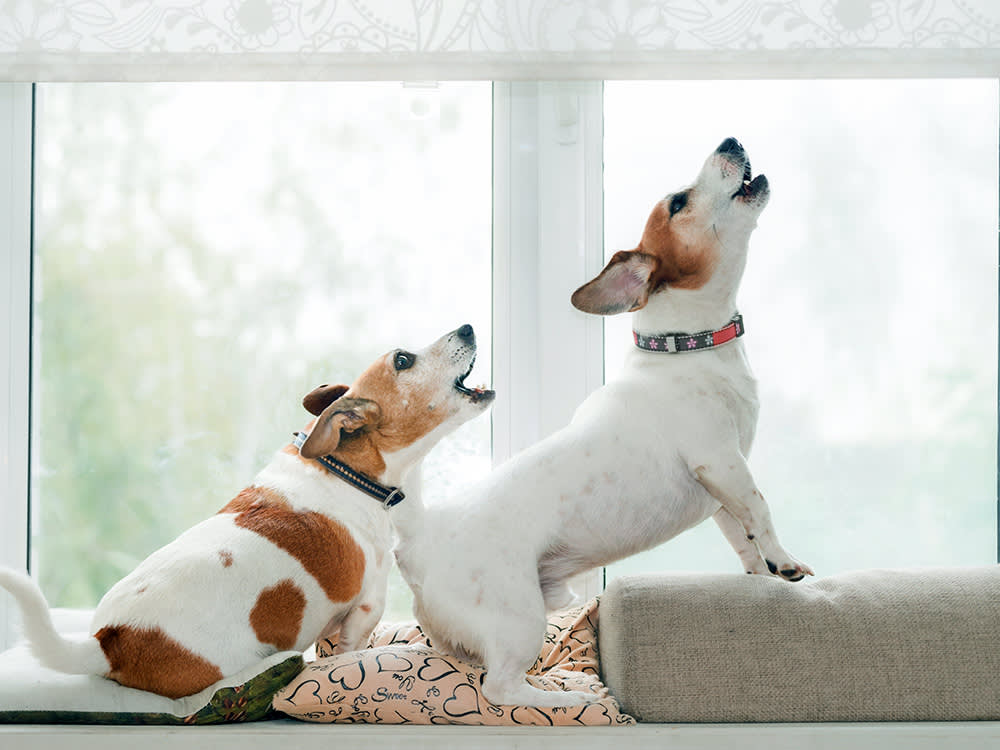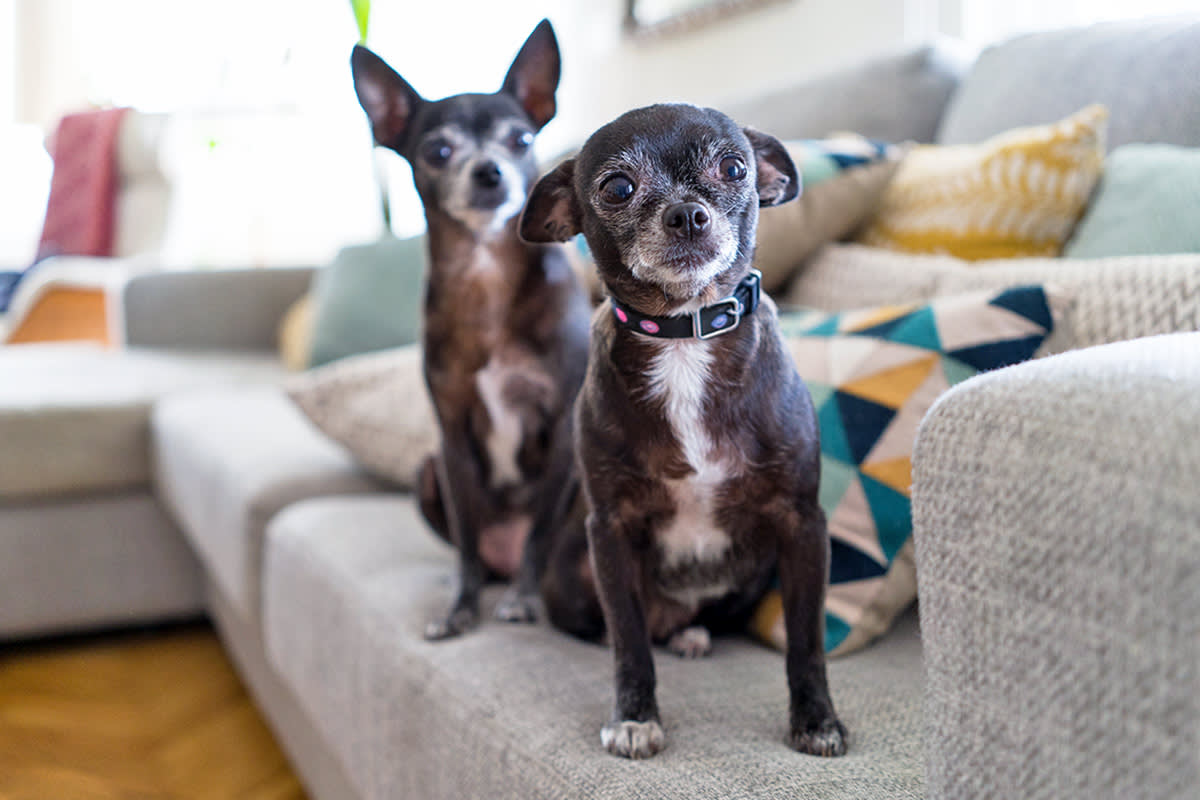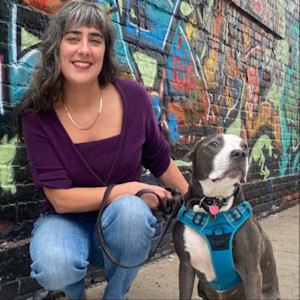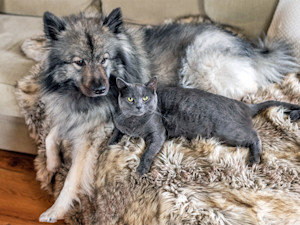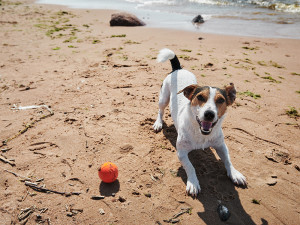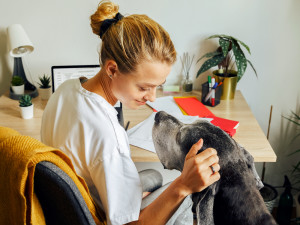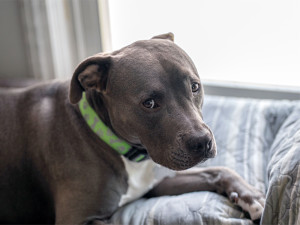Do Dogs Copy Each Other’s Behavior?
Monkey see, monkey do — or something like that.
The only thing cuter than having one dog in the house is two dogs in the house. Double the canine means double the head tilts, tail wags, carpet rolls, cuddles, zoomies and more adorable mannerisms we’ve come to cherish (and, naturally, a few of the irritating ones, too).
If you’ve ever observed two dog roommates, you may have noticed them sync up like peas in a pod, as though they both studied the same choreography and aced every move. Look, they curled up at the same time to take a nap together, butt to butt! Now they’re following each other around the house! They’re both staring, four eyes fixed on you, as you open that jar of peanut butter! They’re peeing on the exact same spot on a walk! Oh no, now they’re both erupting in loud barking when the doorbell rings.
To observe this mimicry in action, please see this amusing viral TikTokopens in new tab of dog brothers who are so synchronized, they seem like clones. Is there any science to this apparent twinning routine, or is it just dogs being dogs? We spoke with a couple dog behaviorists to get their take on what’s really going on when your pups copydog each other.
Yes, dogs mimick each other — it’s how they learn.
The doubling act isn’t entirely in your head: Dogs are social creatures who learn by mimicking other dogs, according to Stanley Corenopens in new tab, Ph.D., professor emeritus in psychology at the University of British Columbia, and author of The Intelligence of Dogsopens in new tab.
How much do you spend on your pet per year?
As we know, dogs evolved from wolves. In the wild, wolf cubs observe the adults of the pack and model their behavior, which is how they learn how to hunt, and it’s “absolutely vital for the survival of the species,” Coren explains. That genetic instinct still remains in our little domesticated pups today.
Another term for this doggie knack for imitating is allelomimetic behavioropens in new tab. The drive to imitate is so strong that it’s often implemented in training programs for working dogs; Coren noted that some police dog training academies will have a litter of puppies observe their mom sniffing out drugs and being rewarded with a treat after, rather than training the puppy from scratch. Similarly, novice herding dogs will often learn by watching the veteran Border Collie herd sheep and follow their lead. Saint Bernard avalanche rescue dogs in the Alps will accompany a rescue dog team on a search mission and quickly pick up the protocol.
Back in the home, matching a puppy with an older dog can shave off some of the little one’s training time, as the pup will simply learn from watching the other dog respond to cues like “sit” and “come,“ “go potty outside,“ “walk up stairs,“ and more fundamentals.
Does the aping work with adult dogs, too?
An old dog can learn new tricks, or at least how to assimilate to the ways of a new roommate. When my senior dog, Phoebe, moved in with another senior dog, Bella, the two fell into formation within a matter of weeks. Phoebe, who had ceased barking for a couple years likely due to hearing loss, began to emit a high pitched “arf” following Bella’s baritone ruh, ruh, ruhs. They would follow each other around all day, nap at the same time — the works. And Phoebe rubbed off on Bella, too; one day, after I gave Phoebe a bath, Bella, notoriously afraid of bath time, jumped in the tub right after, as though to say, “Now my turn!”
Coren agrees that adult dogs will also mimic each other, with the caveat that when one dog moves in with the other, the majority of the time, the resident dog serves as the leader for the rookie to follow. “They recognize which dog had been there first, and tag along… [figuring] he probably knows where all the treats are hidden, and so forth,” Coren says.
Does it ever backfire?
Dogs can certainly also pick up bad behaviors from each other, too, like obnoxious barking, or, in an example Coren shared, where a puppy learned from its older dog roommate how to open the backyard’s gate latch and escape.
While one dog could help another by leading by example, relying on a helper dog to do all the training may fall short, according to Kate Andersonopens in new tab, board-certified veterinary behaviorist and assistant clinical professor at the Cornell Duffield Institute for Animal Behavioropens in new tab.
“The million dollar question I get a lot is if getting another dog can help [another dog’s] problem, and I'm usually really cautious about that,” she explains. “Because it could potentially help, but then it's not a guarantee,” Anderson says.
When it comes to training, Anderson finds it easier to work with one dog at a time, and remove the other pets during sessions; they will often distract or interfere. She describes an “emotional contagion” that can happen: “One dog’s over reaction to something gets everybody going, and it can sometimes be counterproductive to what we're trying to accomplish.”
What if it’s just dogs being dogs?
When you see two dogs do the same thing at the same time, it could simply be that they’re both acting out natural behaviors simultaneously, rather than copying each other. Anderson gave the example of two dogs side by side who are both intently gazing at their human pointing at something. “It only takes one time [for dogs to learn] that humans are usually pointing at food or something the dog wants on the floor.
After that one time, they’re like, ‘OK, human points; go look at where they’re pointing,’” she explains. “Dogs are constantly watching the environment for what to expect and what’s going to happen next, for the cheese to drop.” So, when you see two pups twinning, it could just be that they are demonstrating a behavior they both separately learned along the way, even if it looks like a choreographed routine.
Regardless of the explanation behind it, it’s cute as heck to watch it unfold.
